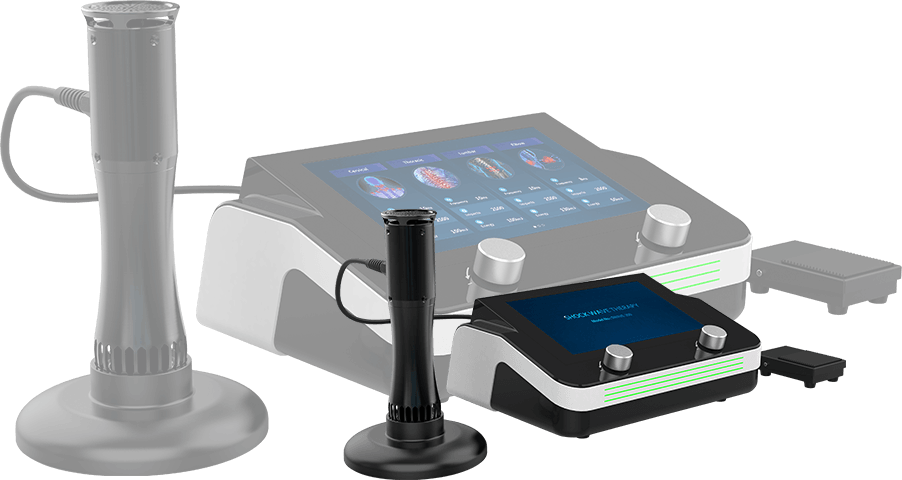Innovative Swave-200 Shockwave Therapy
Machine with Extraordinary Results
High energy shockwave, optimal performance

- Longer lifetime: 10 million shoots for more durable use
- Higher energy: 210mJ for better results
- Success rate of 90%: clinically proven efficacy
- 31-42℃constant handpiece temperature
- Non-invasive and safe treatment
- Expert treatment protocols
- Intelligent touch screen operation
- Cost-effective: unbeatable price in the industry
Equipped with seven massage heads
Customized ergonomic massage heads, providing comfortable massage experience while reducing damage to the bones.

Standard
(36mm massage head)
Large massage area, suitable for whole body muscle massage

1#
(8mm massage head)
Suitable for interosseous muscle meridian

2#
(15mm massage convex head)
Massage on both sides of the spine

3#
(15mm massage concave head)
Imitating thumb pressing muscles

4#
(20mm massage concave head)
Deep relaxation of muscle fascia

5#
(Single point head)
Massage for deep muscle at certain point

6#
(Flat head)
Relaxing deep muscles and muscle nodules
Sports Rehabilitation Center
- Tendinopathies (e.g., Achilles tendinitis)
- Plantar fasciitis
- Calcific shoulder tendinopathy
- Back pain
Hospital Departments
- Urology
- Orthopedics
Clinics
- Chronic tendinopathies
- Trigger points
- Calcifications in joints
Veterinary Medicine
- An invaluable investment for clinics
- Faster and better results for equine injury
- One single device treats multiple conditions
- Expert treatment protocols for precise treatment
- Advanced technology for optimizing performance horse care
Reviews
I've been struggling with tennis elbow for months, and shockwave therapy made a huge difference. After a few sessions, my pain significantly decreased, and mobility improved. It’s a non-invasive, effective treatment that truly works—I highly recommend it for lasting relief!
“As someone who has tried various treatments for my chronic back pain, the device stands out as one of the most effective solutions. The sessions are quick, and I noticed a significant reduction in pain levels. It's truly remarkable how this technology can bring relief to those suffering from back pain. I'm so grateful for this innovative treatment.”
“I speak highly of the power and effectiveness of this impeccably designed and manufactured machine! If you’re struggling with pain and discomfort in any soft tissue of your body, this is your ultimate solution for healing and improving your overall health and vitality. We couldn't be happier knowing that we can now receive professional-grade shockwave treatment right in the comfort of our own home. It's an incredible opportunity for a better quality of life. Don't miss out on this amazing deal!”
After suffering from plantar fasciitis for years, I finally found relief with the machine. The targeted waves helped break down the scar tissue and stimulate healing. My pain has significantly decreased, allowing me to enjoy activities that were once unbearable. If you're tired of living with plantar fasciitis, give this therapy a chance!”
Resources
Why choose us to provide BEST solution
20YEARS
5000
120
6000㎡











